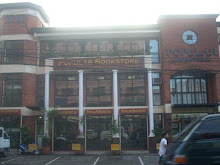From the back cover:
Binondo is a district with a rich historic past. It was the most important arrabal outside of Manila during the Spanish colonial period, mainly because of its role in the socio-economic history of the Philippines. Its story revolves around the Chinese for whom the little hilly island of Minondoc and its adjacent caballeria by the beach were appropriated. But, it is also the story of the mestizos and the natives who made Binondo into a rich, multi-cultural society since its conception as a mission field in 1594 to the end of Spanish rule in 1898.
This book attempts to present the architecture that evolved in Binondo from 1594 to the end of Spanish rule in 1898 through a review of the district’s history. It tries to portray how society can affect the development of architecture and how architecture itself becomes a mirror of society.
Based on archival and secondary source researches, this study hoped to become a reference tool for architectural historians and students, and to all those who appreciate the importance of historic towns and districts as extant mementos from our rich cultural past.

